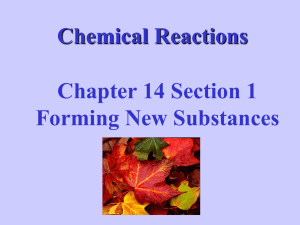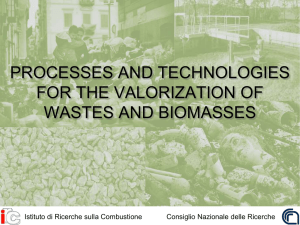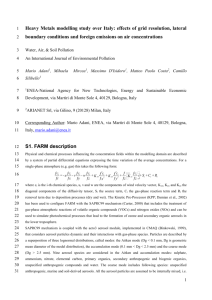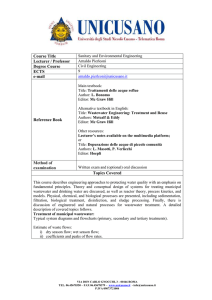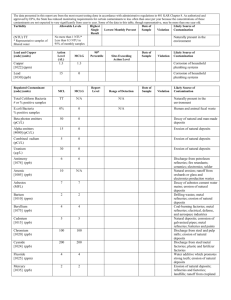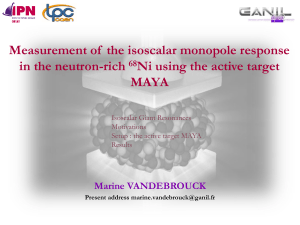Two Freeze out Model in Relativistic Heavy ion Collisions
advertisement
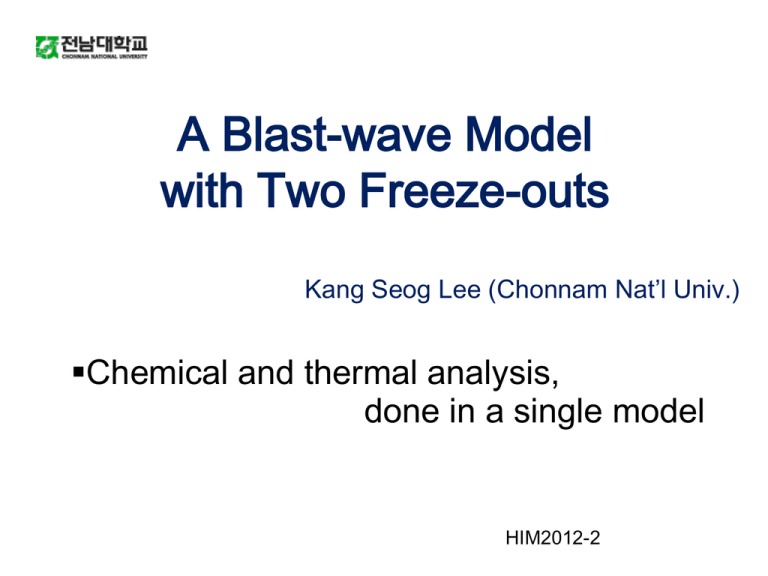
A Blast-wave Model with Two Freeze-outs Kang Seog Lee (Chonnam Nat’l Univ.) Chemical and thermal analysis, done in a single model HIM2012-2 Measurement of hadrons Particle identification and measurement of momentum gives ( px , py , pz , E) or ( p , , y, E) within certain pT and y ranges with errors. T How they are presented: numbers of particles Ni or ratios Rij ( Ni / N j ) single particle spectrum dN / dp , dN / dy , dN / d 3 3 two particle correlations, d N / dp dp T 6 1,T 2,T Chemical analysis of multiplicities with Statistical Model Thermal statistical distribution d 3 Ni di 3 3 d x d p f ( x, p) 3 3 dp (2 ) with Chemical equilibrium is assumed: • Conservation of baryon number • Conservation of strangeness number f ( p) 1 e( E i )/T 1 i Nq q Nq q By taking ratios, hope to cancel the kinematics, and thus to eliminate the experimental limits(cut-offs) Ni di ( i j )/T Rij e Nj dj Careful treatment of resonance contributions is important. Thermal analysis of pt spectra with blast-wave model Information only at freeze-out is needed. Blast-wave model works well in fitting the slopes of mt or pt spectra of various hadrons simultaneously with a common value of temperature, T. T , i , , R0 ,max temperature chemical potential transverse radius transverse expansion rapidity longitudinal rapidity at the surface However, different normalization constants are needed for different hadrons at SPS or RHIC energies. Careful treatment of resonance contributions is important. Blast Wave Model Cooper-Frye Formula freeze-out hypersurface d For an ellipsoidally expanding fireball H. Dobler, J. Sollfrank, U. Heinz, P.L. B457,353(1999) Chemical and thermal analysis of produced hadrons Chemical analysis of hadron ratios Thermal analysis of mt spectra of hadrons e [ ( E P L ) ]/ T Careful treatment of resonance contributions is important in both analysis. Interpretation of At Tch, chemical freeze-out occurs if inelastic collisions, which makes A+B->C+D, are not abundant. Then the numbers of each species, A,B,C, and D are not changing. At Tth, thermal freeze-out occurs if elastic collisions are not abundant. Then, the momentum distribution is not changing. Earlier chemical freeze-out and later thermal freeze-out. Models to incorporate the fact that : Hydrodynamic equation + Hadronic Afterburner Nonaka and Bass, (UrQMD) Heinz+Bass - at Tsw, generate hadrons via Monte Carlo method Hydrodynamic equation + Partial Chemical Hirano and Tsuda, Teaney, Equilibrium (PCE) Kolb and Rapp - below Tch, fix Ni except for short lived resonances ( eg. Delta) and solve for i ‘s (13x13 matrix). When to compare the hydrodynamic calculation with experiment, one needs one of this scheme. HOT! A Blast-wave model with two freeze-outs Suk Choi, K. S. Lee, PRC84, 064905(2011) Chemical analysis at Tch – Lorentz boosted thermal distribution is used. At Tch>T>Tth, number of thermal hadrons of each hadron species fixed. Approximation: Short lived hadrons are treated as long lived ones and they decay outside, which causes small error but calculation becomes much simpler and fast. At Tth, thermal analysis of mt spectra Resonance contribution is carefully considered in both analysis via Sollfrank’s program. Chemical analysis – fitting ratios Chemical Potential Chemical equilibrium is assumed up to this point: • Conservation of baryon number • Conservation of strangeness number Contribution from decays of higher mass resonances: Ni res Total Particle Number Ni Rij Nj Fit for or ratios T , q , s , R0 , max are very insensitive parameters. In the chemical analysis, Careful treatment of the range of y integration according to the experimental value is important in the chemical analysis. Results of chemical analysis Tch=173.4 MeV B=18.5 MeV Tch=173.9 MeV B=26.4 MeV s=0.986 s=1.01 s=7.9 MeV c2/n=1.4 s=6.0 MeV c2/n=0.12 Weak decay contribution is properly included. Thermal analysis - fitting of transverse mass spectra Transverse Mass Spectrum Particle ratios are fixed at Tch. Conservation of number of each species, Ni determines i from i relative to Careful treatment of the range of y integration is important in the chemical analysis. Taking the ratio of number of hadrons with different y-ranges results in a large systematic error. Just publish them with the specification of the y-cutoffs, especially when y-cutoff depends on pT. Estimation of number of particles weak-decayed from other hadrons is not simple since the number of the mother particle is not known. Just leave the number as it is. In the chemical analysis insensitive parameters. , R0 ,max are very Results of thermal analysis Tth=121.1 MeV =126.4 MeV max=5.0 0=1.03 s=0.986 c2/n=5.3 Fit of the width of dN/d distribution with max The width of rapidity distribution can be adjusted with values of max , with all other parameters fixed except for the overall constant, V . Thus the pseudo-rapidity distribution of charged hadron multiplicity is fitted with (V, max ) as fit parameters. Pseudo-rapidity distribution of charged hadrons Conclusion 1. Within an expanding fireball model assuming two freeze-outs, both the yields, the magnitudes and slopes of the pt spectra, and y-distribution of charged hadrons measured at RHIC are described. 2. Hadron ratios, mt spectra of pions, kaons and protons, and rapidity distribution of total charged hadrons are nicely fitted. Resonance contribution is important. For mt spectra, we have only one overall constant. Wide width of rapidity distribution is also nicely fitted by max . 3. We are waiting for LHC data to analyze.
